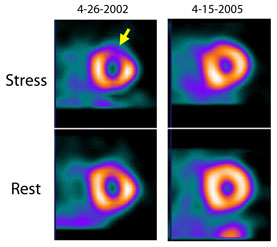Future claims: Moving toward ICD-10 and new standards
ICD-10 and transactions standards are changing. ACP's practice management staff advise how to stay up-to-date across the entire office as Medicare expands its 13,000 diagnosis codes to more than 68,000.
In early 2009, the U.S. Department of Health and Human Services (HHS) announced two related initiatives that update the Health Insurance Portability and Accountability Act of 1996 (HIPAA). The initiatives require physicians to adopt standards for electronic billing, payment, diagnostic and treatment information. Physicians must also adopt two new medical data code sets, the International Classification of Diseases, Tenth Revision (ICD-10) and transaction standards known as Accredited Standards Committee X12 Version 5010.
ICD-10 consists of two parts: the Clinical Modification (ICD-10-CM) for the reporting of diagnoses in all health care settings, and the Procedure Code System (ICD-10-PCS) for hospital reporting.

Physicians and other ambulatory service providers will continue to report procedural codes through the American Medical Association's Current Procedural Terminology (CPT) code set, and will report patient diagnoses by using the ICD-10-CM code set.
Q: Why are updated transaction standards needed?
A: Version 4010 is widely recognized as outdated. It lacks certain functions needed by the health care industry, and it cannot accommodate the use of greatly expanded ICD-10 code sets. Also, Version 5010 will help insurance systems progress to an electronic environment.
Q: Why are new ICD-10 codes needed?
A: The new ICD-10 coding system greatly expands the ICD-9 code set developed nearly 30 years ago. The number of diagnosis codes will increase from approximately 13,000 to 68,000. The new code sets are intended to fix:
- limited ability to accommodate new diagnoses and procedures,
- inadequate specificity to describe diagnoses and procedures with the accuracy required by 21st century medicine, and
- inadequate precision needed for emerging uses, including pay-for-performance, comparative effectiveness, and biosurveillance activities. Broad categories of biosurveillance include detecting early warning signs of disease outbreak (such as measles and swine flu), coordinating program participants, determining the reliability of information, and drawing epidemiological conclusions.
Q: When will physicians be expected to adopt Version 5010 and ICD-10?
A: Physicians must comply with Version 5010 by Jan. 1, 2012. The compliance date for ICD-10 is Oct. 1, 2013. As a result of successful lobbying by the College and other stakeholders, these compliance dates are substantially delayed from the original ones proposed by HHS.
Q: What will Version 5010 transactions do that Version 4010 transactions cannot?
A: Among the advantages are:
- Patient eligibility inquiry and patient eligibility response transactions are expected to be more specific. The transaction will indicate whether the patient is the health plan's primary enrollee or a dependent. Also, if the eligibility date, insurance plan name or benefits effective date don't match the patient's overall coverage, the health plan will be required to report that to the physician.
- The new referral authorization transaction is expected to allow document attachments.
- Remittance advice transaction should be much more consistent from payer to payer. Deficiencies in the older version required many more workarounds and payer-specific coding sequences. The new remittance advice will also have an imbedded link to the payer's Web page that lists claims adjustment codes, in case clarification is needed. And the new remittance advice transaction will allow the physician to use ICD-10 codes to report pre-existing conditions and to address some ongoing patient privacy issues.
Q: What will Version 5010 and ICD-10 require from a typical physician office practice?
A: Version 5010 adoption requires updating software and systems used in the electronic transmission of claims, remittance, eligibility, claims status requests and responses, and staff training on how to use this new software.
Adopting ICD-10 will require training clinical and administrative staff on the expanded and more precise coding system. It will also require discussions with vendors of the practice management system, electronic health record, billing services, clearinghouses, and any other products that intersect with ICD-10.
There must be software updates, a review of health plan contracts, modification of office superbills and other coding documentation processes, and the general integration of these changes into the office workflow. An analysis conducted by Nachimson Advisors that was partially supported by ACP estimated that the first-year ICD-10 adoption cost for a typical three-provider practice would be significant. Initial cost estimates before the implementation deadlines were delayed by the U.S. Department of Health and Human Services (HHS) were $83,000 for a small practice to $2.7 million for a large practice.
Q: How can practices prepare for the ICD-10 and Version 5010 transitions?
A: Ask software vendors and clearinghouses if and when the new standards will be included in a scheduled upgrade. A needs assessment identification of goals, steps for implementation and actions that will fulfill the practice's needs can ensure that there are minimal disruptions to the practice's business routine. Physicians must ask when their vendor or clearinghouse will be ready to start testing Version 5010 claim submissions. Early preparation will make the transition smoother, as the deadlines grow closer.
Q: How will the College help practices implement the changes?
A: The College is currently collecting information on office operations that will have to comply with these new standards. The College plans to disseminate information and tools through articles, Web links, webinars and presentations at its national and local chapter meetings.




